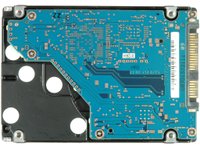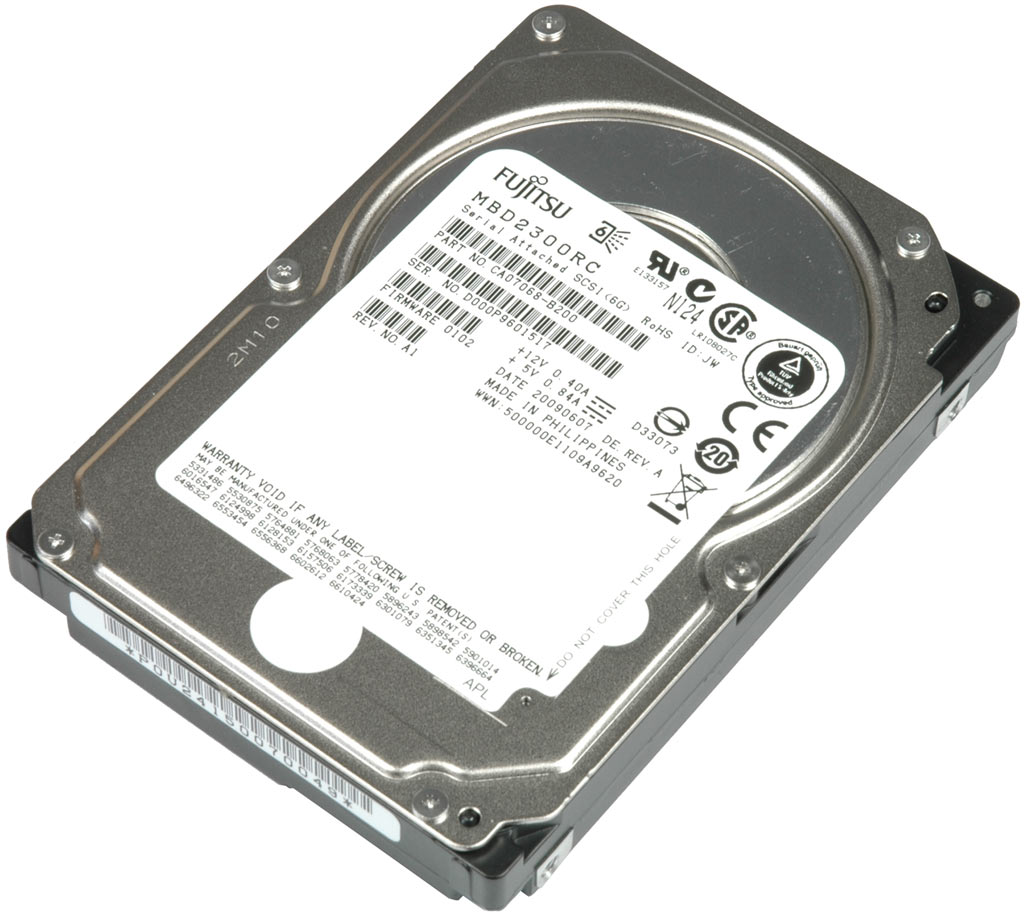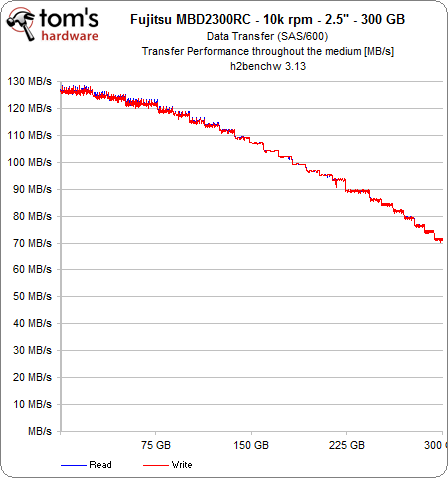New Enterprise Hard Drives: 6 Gb/s SAS And 200 MB/s
2.5”: Fujitsu MBD2300RC (10,000 RPM, 300GB)
The MBD2300RC is Fujitsu’s 2.5” mainstream enterprise hard drive (MBD2 RC). The drive family is available at 300GB or 147GB capacities, and it comes with the new 6 Gb/s SAS 2.0 interface. This faster link speed can be particularly beneficial when reading or writing from or into the drive’s 16MB cache memory.
Admittedly, the cache size isn’t particularly large, and the 247 MB/s interface bandwidth didn’t really require SAS 2.0. The benchmark results aren’t all that great, either, as Seagate’s Savvio 10K.2 and 10K.3 typically deliver higher I/O performance, and the 10K.3 clearly wins on throughput. However, Fujitsu’s 300GB MBD2300RC makes a strong comeback in the PCMark Vantage application benchmark, showing that the drive might have been optimized for workstation and PC-type applications rather than server workloads. For typical Windows tasks, the Fujitsu MBD2300RC drive is almost as fast as some 15,000 RPM models—not bad!
Finally, this drive really shines with regard to power consumption. The 3.5W idle power draw is impressive enough that only Seagate’s 7,200 RPM Constellation can beat it. Other 2.5” enterprise drives require up to 6.8W and average almost twice the idle power. Fujitsu’s peak power consumption is also excellent; no other 10,000 RPM drive slips under the 6.2W power mark. Yet, Fujitsu isn’t that efficient when it comes to delivering a limited data stream. At full HD video playback, the MBD2300RC required 5.0W. Hitachi and Seagate both beat that and also consume less power during workstation-type I/O operations.
Looking at this Fujitsu drive from a performance per watt standpoint, the MBD2300RC does great at streaming reads and provides average results for workstation I/O efficiency. If you want to maximize for efficiency rather performance, the MBD2 RC is your drive.


Throughput Diagram
The Fujitsu MBD2300RC doesn’t break records, but it does deliver solid throughput. More results and comparisons can be found in the upcoming benchmark section.
Get Tom's Hardware's best news and in-depth reviews, straight to your inbox.
Current page: 2.5”: Fujitsu MBD2300RC (10,000 RPM, 300GB)
Prev Page Enterprise HDDs Have Reached 200 MB/s! Next Page 2.5”: Fujitsu MBE2147RC (15,000 RPM, 147GB)
